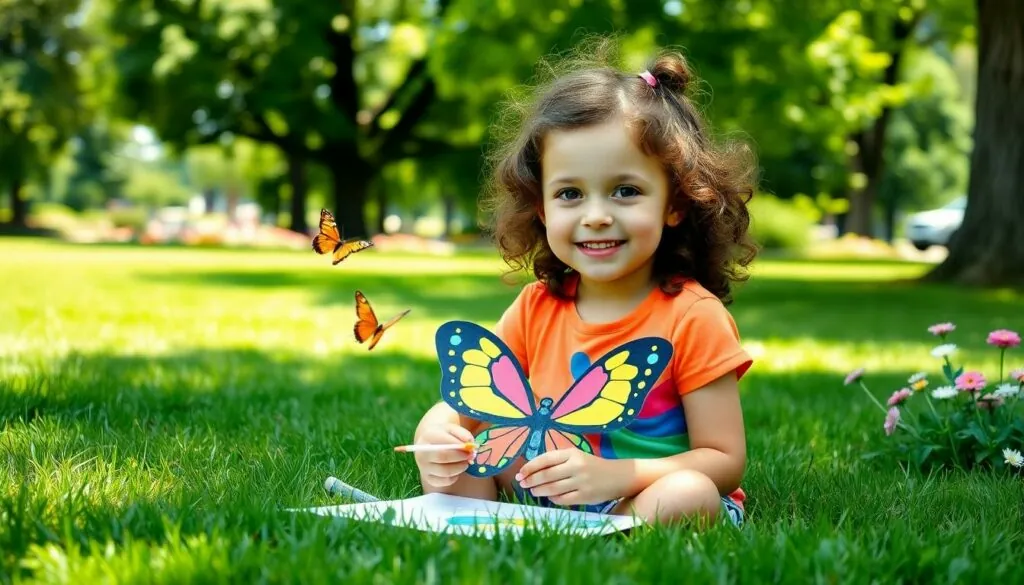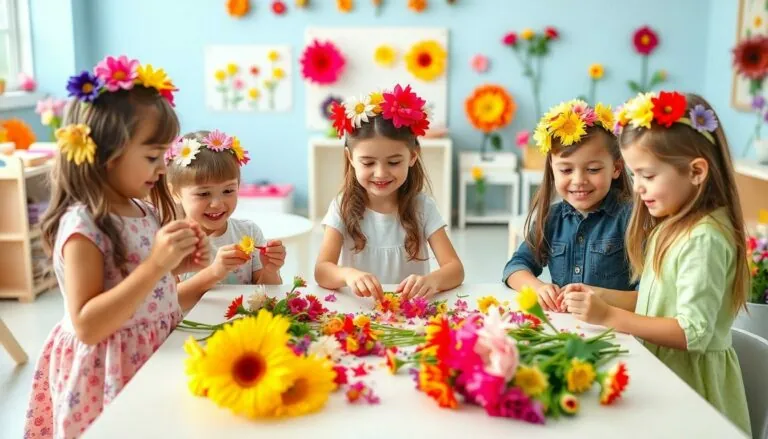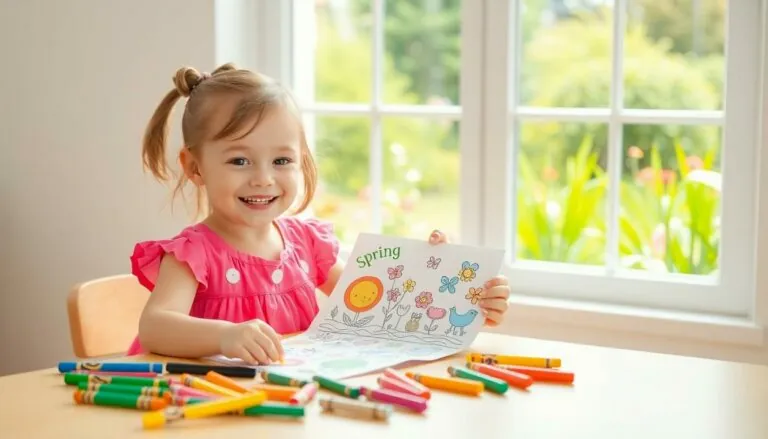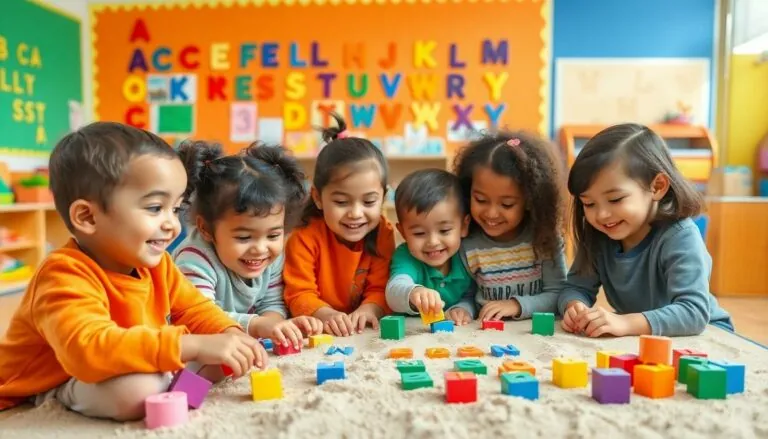Table of Contents
ToggleButterflies are nature’s little wonders, fluttering around like they own the place. For preschoolers, these colorful creatures aren’t just pretty; they’re the perfect gateway to learning and creativity. Imagine the excitement on their faces as they transform into tiny entomologists, exploring the fascinating world of butterflies through fun activities.
Overview of Butterfly Activities
Engagement with butterfly activities fosters creativity in preschoolers. Various interactive exercises provide opportunities for children to explore butterfly life cycles and habitats. Art projects like butterfly crafts allow for hands-on experiences, enhancing motor skills and encouraging artistic expression.
Storytime sessions centered on butterflies introduce vocabulary while sparking imaginations. Interactive games, such as butterfly matching or memory games, promote cognitive development. Nature walks to search for real butterflies connect children with their environment, making learning experiential and fun.
Gardening activities, including planting flowers that attract butterflies, help preschoolers understand the importance of pollinators. Sensory bins filled with butterfly-themed items engage young learners through touch and exploration. Watching caterpillars transform into butterflies offers a thrilling and educational insight into metamorphosis.
Collaboration during group activities fosters teamwork and communication skills. Each activity presents an avenue for discussion about butterfly characteristics, colors, and behaviors. Incorporating multimedia resources, like videos or songs about butterflies, supplements traditional learning methods, appealing to different learning styles.
With their vibrant colors and fascinating life cycles, butterflies naturally captivate young minds. Implementing a variety of butterfly activities promotes curiosity and enthusiasm for the natural world, making it an enriching theme for preschool education.
Importance of Butterfly Activities for Preschoolers
Engaging in butterfly activities significantly enriches preschoolers’ learning experiences. Preschoolers gain exposure to essential educational concepts through hands-on interactions with butterflies.
Educational Benefits
Butterfly activities offer numerous educational benefits. They introduce scientific concepts such as life cycles, habitats, and ecosystems. Visual aids and vibrant colors from butterfly-related projects enhance memory retention. Storytime sessions featuring butterflies enrich vocabulary and comprehension skills. Interactive games stimulate critical thinking and problem-solving. Classroom discussions about butterflies encourage curiosity about the environment. Activities like crafting butterfly shapes reinforce fine motor skills while integrating art into learning.
Developmental Skills
Butterfly-themed activities promote various developmental skills in preschoolers. Social skills improve as children collaborate on group projects or participate in nature walks. Creativity flourishes during art projects where children express themselves using colors and materials. Cognitive skills develop through sorting butterflies by size or color during interactive games. Motor skills enhance while participating in butterfly crafts or playing butterfly-themed games. Understanding the role of butterflies in nature instills a sense of responsibility towards the environment. Such experiences provide foundational skills crucial for future learning and growth.
Fun Butterfly Activity Ideas
Engaging preschoolers with butterfly activities fosters creativity and learning. Here are some captivating options to consider.
Craft Activities
Create colorful butterfly crafts by using coffee filters, markers, and clothespins. Children can color the filters with markers, moisten them, and watch the colors blend. Another idea involves making stained glass butterflies from cardstock and colored tissue paper. Kids cut out butterfly shapes, layer tissue paper, and glue them to create beautiful designs. Encourage them to decorate their crafts with glitter, sequins, or stickers. Origami butterflies present a different challenge where they can enhance fine motor skills. Craft activities promote creativity, and they help reinforce knowledge about butterflies.
Outdoor Exploration
Conduct nature walks to observe butterflies in their natural habitats. Equip preschoolers with butterfly identification charts, enabling them to recognize various species. Organize a butterfly garden planting session where children plant flowers that attract butterflies. Encourage active participation by allowing them to water and look after their plants. Introduce a scavenger hunt for specific butterfly types or related items to make exploration exciting. Set up butterfly nets for safe catching and observing, promoting hands-on learning. Outdoor activities not only increase awareness of ecosystems but also provide fresh air and physical activity.
Tips for Engaging Preschoolers
Engaging preschoolers in butterfly activities can spark their interest and creativity. Various methods enrich these experiences, making learning enjoyable and interactive.
Encouraging Creativity
Fostering creativity involves hands-on art projects. Children can design vibrant butterflies using materials like coffee filters and tissue paper. Coloring, painting, and collage work promote self-expression and fine motor skills. Introducing storytelling with butterfly themes allows preschoolers to craft their narratives. These projects encourage imaginative thinking and enhance cognitive development. From nature-inspired crafts to collaborative murals, creativity flourishes through diverse activities.
Making Learning Fun
Learning becomes an enjoyable adventure through interactive games focused on butterflies. Implementing scavenger hunts stimulates curiosity about nature while enhancing problem-solving skills. Tracking butterfly patterns and identifying different species build observational abilities. Organizing group discussions about butterflies fosters curiosity and communication. Incorporating physical activities, such as butterfly dances, adds movement to learning. Multimedia resources like videos can complement these activities, presenting information engagingly. Overall, these methods ensure that learning remains exciting and dynamic for preschoolers.
Conclusion
Engaging preschoolers in butterfly activities opens a world of wonder and discovery. These vibrant insects not only capture children’s imaginations but also serve as a gateway to essential learning experiences. By incorporating hands-on projects nature exploration and interactive games, educators and parents can foster a love for nature and nurture critical skills.
The variety of activities discussed allows for creativity and collaboration while enhancing cognitive and motor skills. As children explore the fascinating world of butterflies they build a strong foundation for future learning. Embracing these delightful activities ensures that preschoolers remain curious and enthusiastic about their environment.







